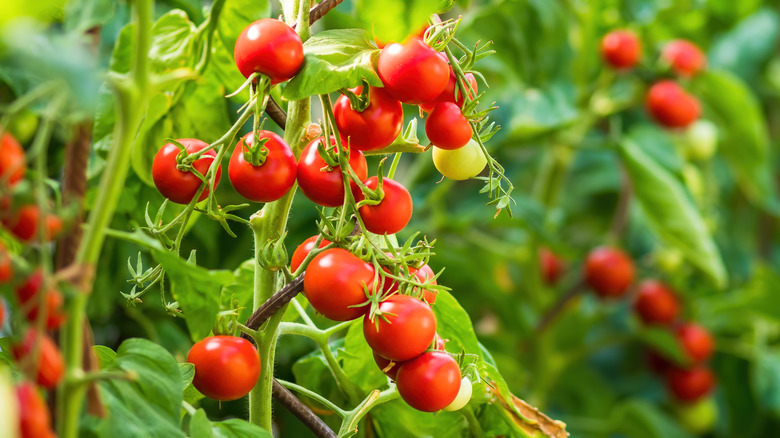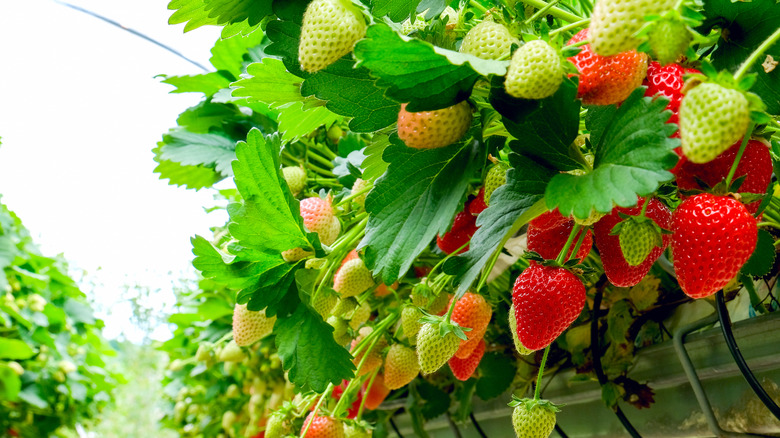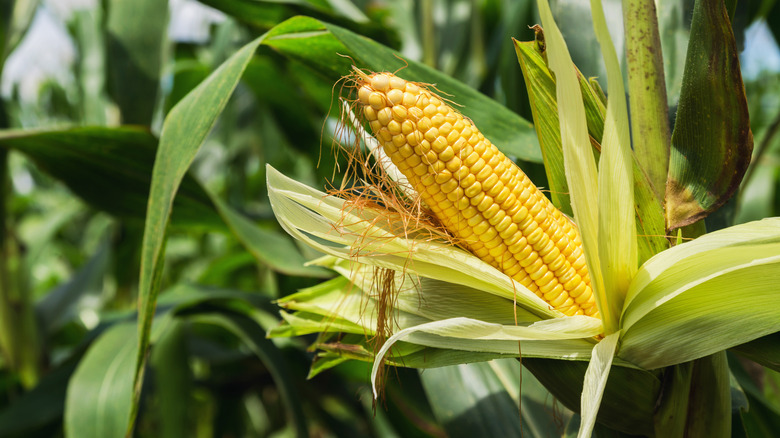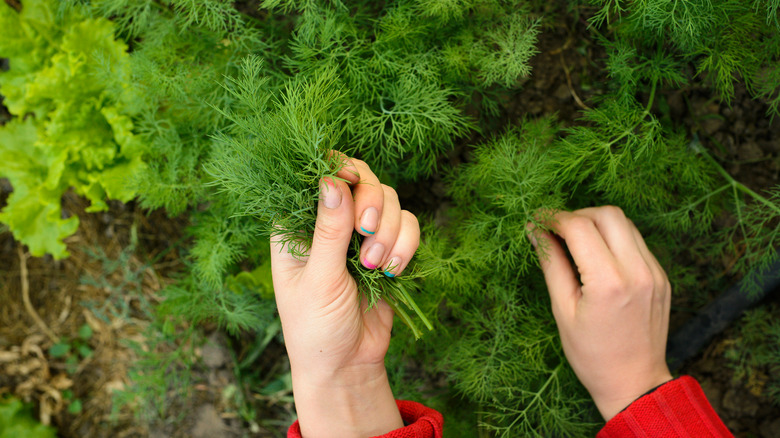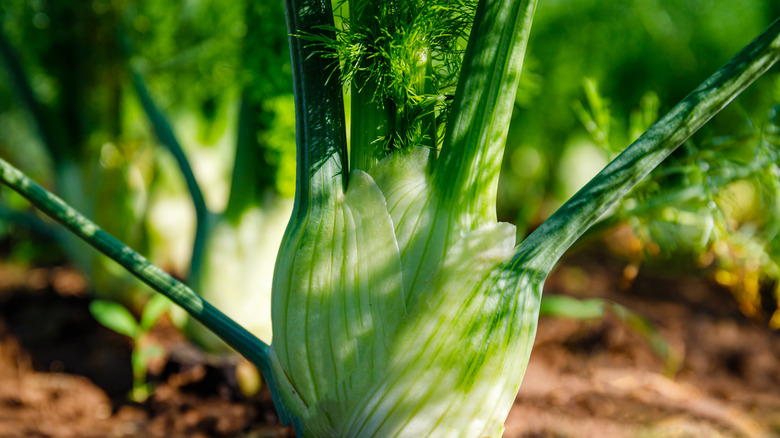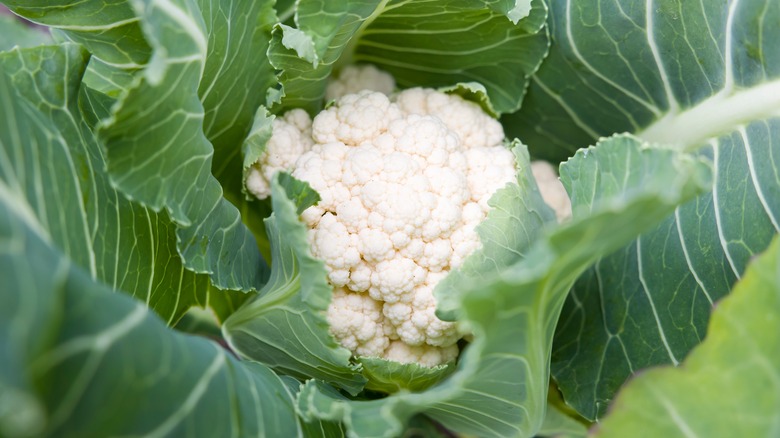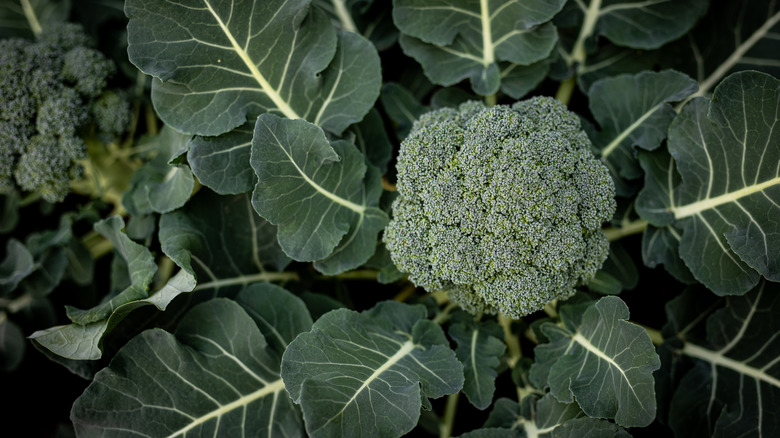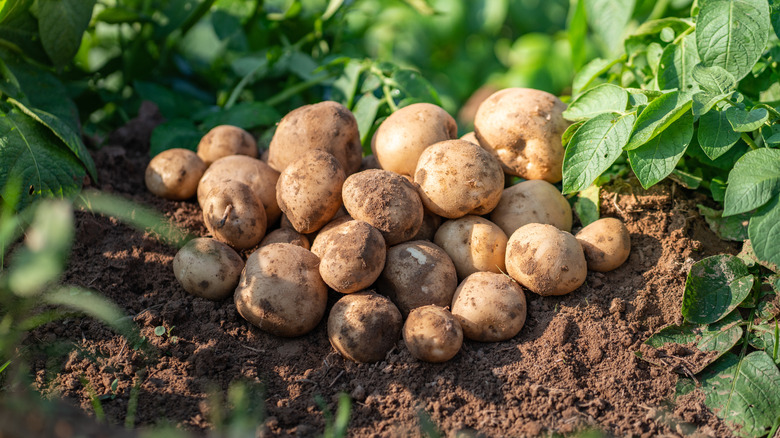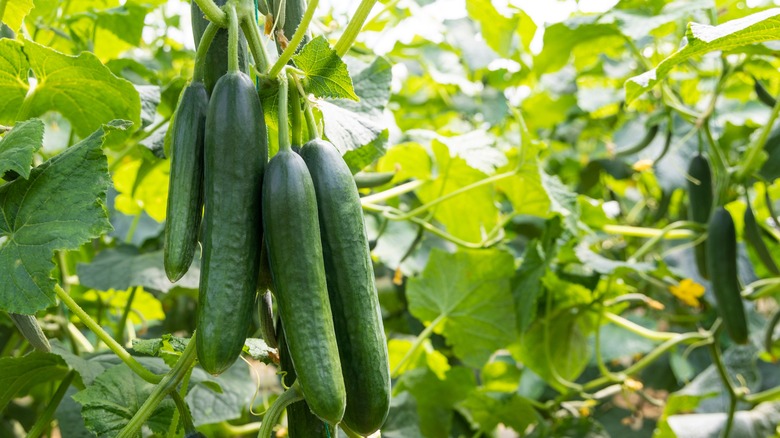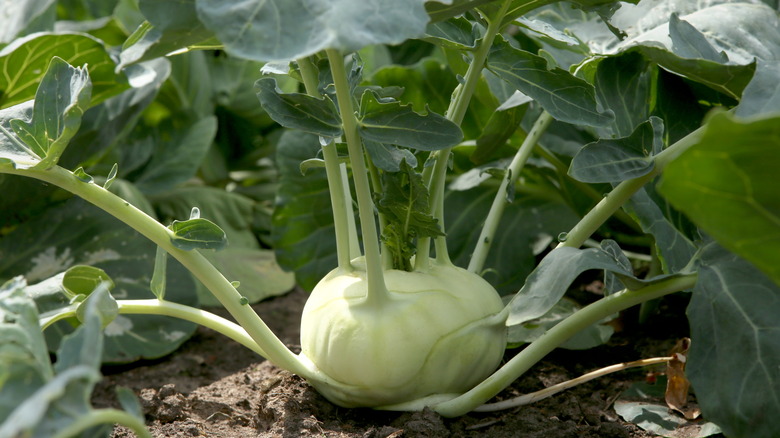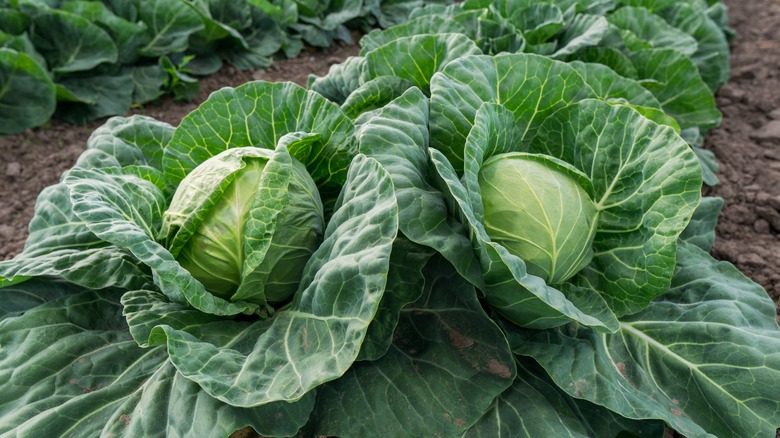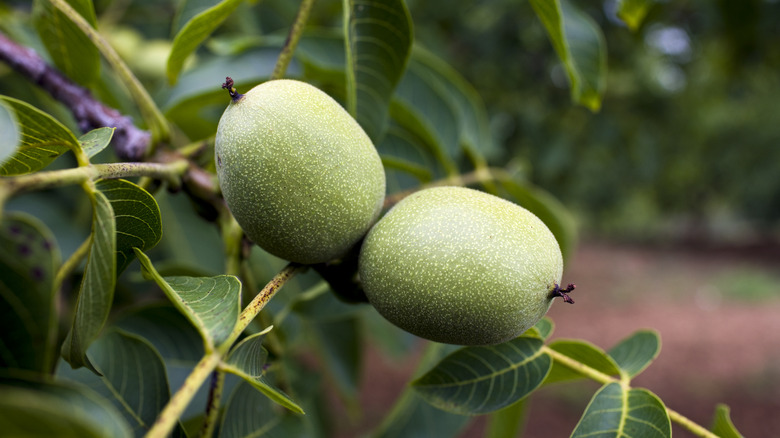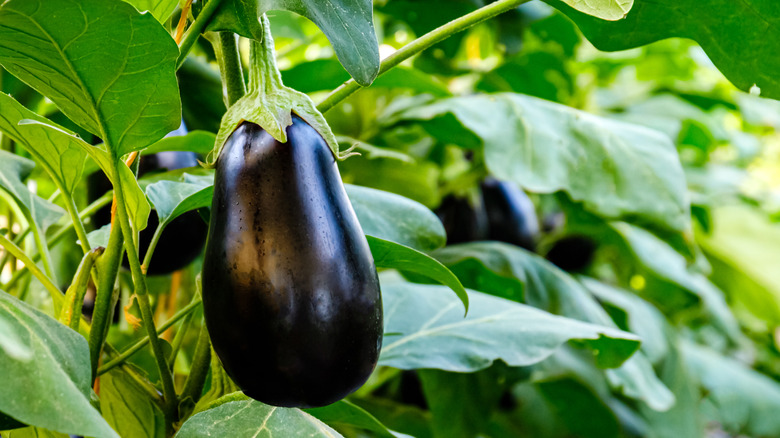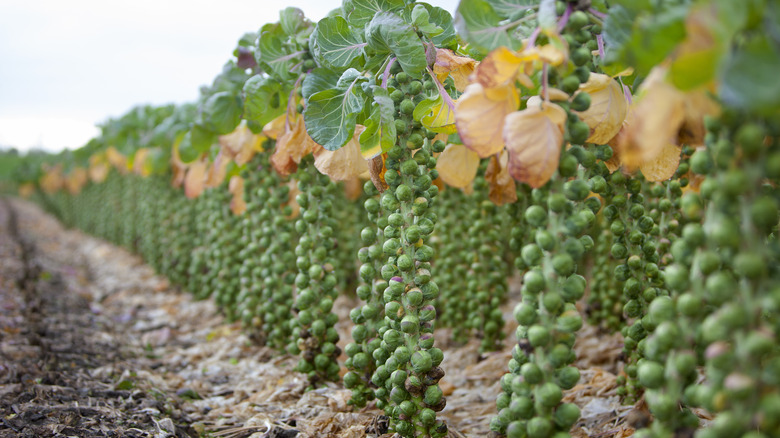13 Plants You Won't Want Too Close To Your Tomatoes This Year
A very common gardening practice is to plant crops next to each other, where one plant can benefit the other in some way, also known as companion planting. These benefits may include one plant deterring common pests from a neighboring crop, both plants having similar pH levels or soil conditions, or one plant providing necessary shade for another. In such cases, these crops grow best when together. However, the opposite can also be true, and tomatoes provide a great example of both companion and incompatible planting.
If grown together, incompatible plants could provide too much shade or not enough, their roots may compete for resources, or one of them could zap the nutrients from the other. As for tomatoes, while the fruit is commonly planted alongside basil plants, marigold flowers, celery, onions, and garlic, there are plenty of crops you should avoid planting not only in companion to your tomatoes but in the same vicinity altogether.
1. Strawberries
Strawberries and tomatoes may grow in the same season, but they shouldn't be planted together. Each red-fruited plant is prone to a dangerous fungal disease called verticillium wilt, which can be fatal. Since they're both so susceptible, if one catches it, the other is sure to follow, so avoid planting the two close to one another.
2. Corn
Corn and tomatoes may make for a lovely culinary pairing, but the same can't be said in the garden. Similar to strawberries, they're both vulnerable to a shared pest — called the corn earworm or tomato fruit worm. Again, if one catches it, the other will as well. Plus, tomatoes need full sun, and corn may provide too much shade.
3. Dill
Dill and tomato plants have a bit of a love-hate relationship. Dill actually helps repel aphids and hornworms from tomatoes, and tomatoes keep the wind from damaging young dill plants. However, mature dill plants will stunt tomato plant growth. Since tomatoes are annuals, you could plant it near young dill for one season, but veer away from mature plants.
4. Fennel
Fennel is incredibly fragrant as an ingredient in your kitchen, and a gorgeous, fluffy crop for your garden, but it doesn't play well with others — especially tomatoes. Fennel roots leak out a secretion that can majorly stunt most plants' growth, and tomatoes are no exception. In fact, it's recommended not to companion plant fennel with any other crop.
5. Cauliflower
Cauliflower has a lot of wonderful companion plant pairings, but tomatoes are not one of them. They're both very demanding crops in terms of nutrients, requiring a lot from their soil. Planting them close to one another would lead to either one plant zapping the other's nutrients, or both of them competing so heavily that neither gets enough.
6. Broccoli
The issue with planting broccoli and tomatoes together is the same for cauliflower — each crop will fight the other for resources, including water, sun, and nutrients. One specific issue you may run into with this pairing is calcium deficiency. This can actually be applied to all nightshades when it comes to broccoli, including peppers and eggplants.
7. Potatoes
Despite their similar sounding names, potatoes and tomatoes are another companion plant no-go. Since they're both nightshades, they'll be in competition for a number of vital nutrients and resources. This also means they're vulnerable to the same illnesses and pests — specifically blight. If one gets ill or infested, there is little you can do to save the other.
8. Cucumbers
Some gardeners recommend planting cucumbers and tomatoes together, but there are a few reasons to avoid this pairing. One, they share similar disease vulnerabilities. More than that, they both vine, and if those vines get too dense, they could block air circulation and be even more susceptible to illnesses like blight and cucumber mosaic virus.
9. Kohlrabi
Kohlrabi, also known as a turnip cabbage, is another plant that doesn't fare well when planted next to or near tomatoes. This is another case of both plants being very demanding in terms of nutrients, and they'll each deplete the other. Without proper nutrients, turnip cabbages will turn yellow, and won't produce a strong harvest.
10. Cabbage
Regular cabbage — or any variety, really — is also not compatible with tomatoes for the same reason as kohlrabi. While the two crops compete heavily for nutrients, they will either start to look incredibly lackluster, stop yielding as much produce, and most likely, stop growing altogether.
11. Walnut trees
Surprisingly, walnut trees are one of the biggest threats if planted in close proximity to your tomatoes. This isn't because of resources or shared pests, but the walnut tree's root system. The roots produce a chemical called juglone, which will destroy your tomato crops. Plant tomatoes at least 50 feet away from any walnut trees to be safe.
12. Eggplant
Eggplants are similar to cucumber in terms of tomato companion planting. That is, many people do plant them together, but you should be careful about this pairing. They are both nightshades, meaning they'll both compete heavily for resources and nutrients, and if one of them were to get infested or infected, they'd both go down.
13. Brussel sprouts
Last up are Brussel sprouts, which are in the same camp as broccoli, kohlrabi, cauliflower, and cabbage when it comes to tomatoes. All of these crops are in the brassica genus, and should never be planted with tomatoes. Other common brassicas to avoid include bok choy, arugula, horseradish, radish, watercress, and any type of mustard plant.
